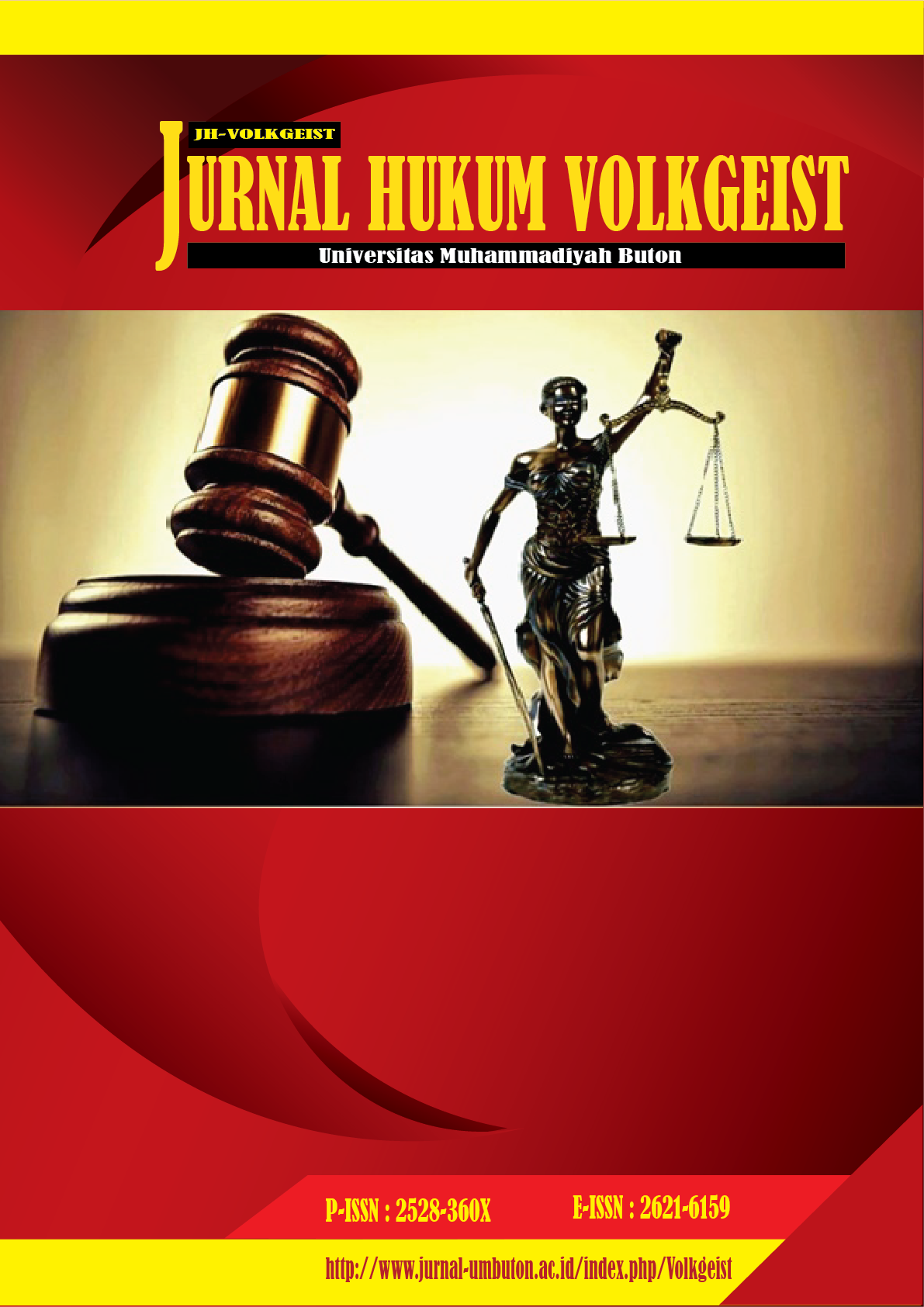The Power of Detailed Evidence as a Base on Land Rights
DOI:
https://doi.org/10.35326/volkgeist.v7i1.1993Keywords:
Strength of Evidence, Details, Base on Land RightsAbstract
The strength of the proof of detail as the basis for land rights. This study was conducted to analyze the position of the detail as the basis for land rights in proving community ownership of land and to analyze the legal protection of land tenure by the community based on the detail as the basis for their rights. This research uses empirical legal research. The results of the study show that (1) the position of detail as the basis for land rights in proving land ownership by the community, namely before the issuance of the UUPA, detail was proof of ownership of land rights. Along with the enactment of the UUPA and Government Regulation Number 24 of 1997 concerning Land Registration, the Details are no longer as evidence of land rights, but as evidence of a person's control over the controlled land, so that if it is not corroborated with other evidence, the Details cannot be used absolutely as a tool. proof of ownership of land in the trial; and (2) legal protection of land tenure by the community based on details as the basis for their rights, namely that they have not yet fully received legal protection. So that in order to obtain legal certainty and protection.
Downloads
References
A. Suriyaman Mustari Pide. (2014). Hukum Adat Dahulu, Kini dan Akan Datang. Kencana.
Aminuddin Salle. (2010). Hukum Agraraia Indonesia. As Publishing.
Arba. (2019). Hukum Agraria Indonesia. Sinar Grafika.
Faharudin, F. (2019). Prinsip Checks and Balances Ditinjau Dari Sisi dan Praktik. Jurnal Hukum Volkgeist, 1(2), 115–128. https://doi.org/10.35326/volkgeist.v1i2.97
Muchsin, H. (2010). Hukum Agraria Dalam Perpektif Sejarah. Jakarta: PT. Rafika Aditama.
Ilham. (2015). Reformasi Agraria di Indonesia. Raja Grafindo.
Irwansyah. (2020). Penelitian Hukum Piliha Metode dan Praktik Penulisan Artikel. Mirra Buana Media.
Jimmy Joses Sembiring. (2010). Panduan Mengurus Sertifikat Tanah. Visimedia.
La Ode Haniru. (2017). Tinjauan Yuridis Pelakasanaan Perkawinan Walian Tondo (Turunan Raja) Berdasarkan Hukum Adat Kulisusu Utara Kabupaten Buton Utara (Studi Desa Waode Buri Kec. Kulisusu Utara Kab. Buton Utara). 1(April), 1–14.
M. Yahya Harahap. (2006). Hukum Acara Perdata. Sinar Grafika.
Makarao, Moh. Taufik. (2009). Pokok-Pokok Hukum Acara Perdata. Rineka Cipta.
Marihot Pahala Siahan. (2003). Bea Perolehan Hak Atas Tanah dan bangunan, Teori dan Praktik. PT. Raja Grafindo Persada.
Munawir Abdul Kamal. (2016). Tinjauan Yuridis Kekuatan Hukum Pembuktian Rincik Dalam Perkara Perdata. Fakultas Syariah dan Hukum UIN Alauddin.
Nirwana., Patittingi, Farida., & Nur, Sri Susyanti (2018). Perlindungan Hukum bagi Pemegang Hak atas Tanah Sesungguhnya dalam Transaksi Jual Beli Menggunakan Rincik Palsu. 1(2), 180–197. http://joernal.umsb.ac.id/index.php/pagaruyuang/index
Olivia Muldjabar. (2018). Prinsip Tanah Walaka Pada Masyarakat Hukum Adat Tolaki Pertanahan, Sistem. Jurnal Hukum Volkgeist, 3(1), 68.
Sibuea, H. Y. P. (2011). Arti Penting Pendaftaran Tanah Untuk Pertama Kali. Negara Hukum, 2(2), 287–306.
Salam, S. (2019, June). Land Registry: Communal Rights Certificate and the Problem in Indonesia. In WESTECH 2018: Proceedings of 1st Workshop on Environmental Science, Society, and Technology, WESTECH 2018, December 8th, 2018, Medan, Indonesia (p. 461). European Alliance for Innovation.
Wantjik Daleh. (1982). Han Anda Atas Tanah. Ghalia Indonesia.
Downloads
Submitted
Accepted
Published
Issue
Section
License
- Author retains the copyright and grants Jurnal Hukum Volkgeist the right of first publication of the work simultaneously licensed under the Creative Commons Attribution-ShareAlike 4.0 License that allows others to share the work with an acknowledgment of the work's authorship and initial publication in this journal
- The author is able to enter into separate, additional contractual arrangements for the non-exclusive distribution of the journal's published version of the work (e.g., post it to an institutional repository or publish it in a book) with the acknowledgment of its initial publication in this journal.
- The author is permitted and encouraged to post his/her work online (e.g., in institutional repositories or on their website) prior to and during the submission process, as it can lead to productive exchanges, as well as earlier and greater citation of the published work (See The Effect of Open Access).









.png)































